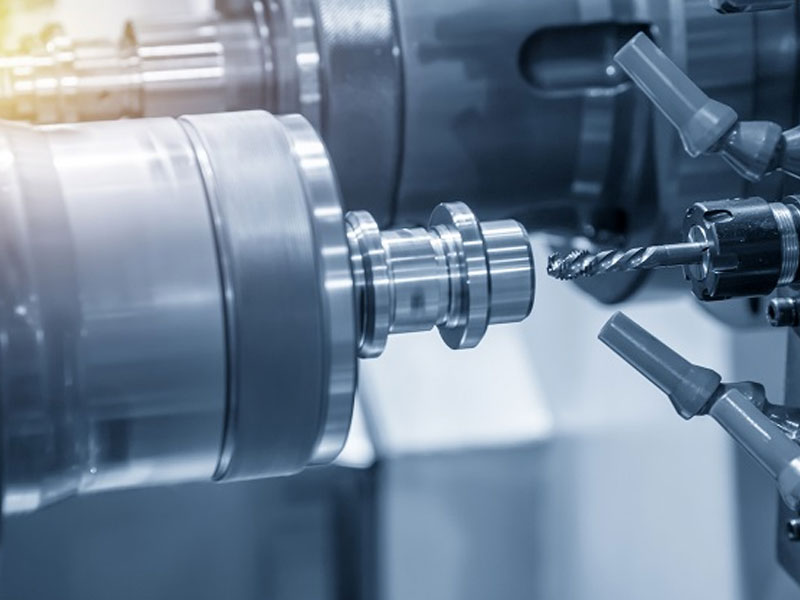CNC Machines, like everything else in life, begin to wear down as they age. Whether your issues are performance or maintenance related, an aging piece of equipment can leave you wondering whether or not it is time to replace your CNC machine. On the surface, it may seem like a simple decision, but there are many facets that can have lasting impacts on your business’ profitability. While the simple dollars and cents will weigh heavily in your decision making process, it is also important to consider several key alternatives before pulling the trigger on a machine replacement.
Here are some signs that it’s time to replace your CNC machine.
A Dip in Production
One indicator that it may be time to replace your machine is that it takes longer to produce parts than it did in the past. A wide range of wear and tear could force you to break down for maintenance or adjust your speeds and feeds to yield acceptable parts (leaking fluid, timing circuits, busted belts, etc.) and these malfunctions can significantly hinder your rate of production. For machines that are running ‘round the clock’, it won’t take long to notice these delays eating into your shop’s bottom line.
Often times, these issues aren’t readily apparent.. Delays can occur by the second, (as opposed to hours of down time), but when these instances are combined, we begin to see a bigger picture. This is why it is important for diligent operators to track production times and delays, so they can begin to notice trends as soon as possible.
Replacement parts are harder to find
When it comes to machine maintenance, the million-dollar question is always “should I repair the machine or replace it?” A good signal that it’s time to replace your machine is that replacement parts are harder and harder to find. With skilled operators and a routine maintenance schedule, some CNC machines will outlive their maker. This is great when it comes to machine longevity, but not so much when the primary source of replacement part ceases to exist.
Secondary part providers are always an option, but as replacements stop being produced, it will become harder (and more expensive) to get your machine the components it needs to function at a high level. Taking time to search for new parts while your machine sits idle is another source of lost revenue. If you’re already struggling to find replacement parts, it may be time to replace your machine.
Poor Maintenance
There is generally a clear correlation between the life of a CNC machine, and the routine/preventative maintenance it receives. Has your machine been maintained regularly? Do you have detailed maintenance logs and perform routine audits? If you have a used machine and don’t know the entire maintenance history, consider the frequency that the machine needs repairs. Without a proper log, on-going maintenance issues can go unnoticed.
The Cost of Repairs
Time to do some math. Replacement parts get spendy. Service technicians even more so. Depending on the rate at which your machine needs repairs, when factoring in parts, labor, down time, etc. you can quickly get to a point where it no longer make sense to stick with a piece of aging equipment. Before long, you could be spending more than it costs to purchase a new machine, just to keep your used CNC limping along.
This, of course, depends on what sort of machines you’re looking to acquire. While technology is becoming more affordable, new CNCs can vary widely in price. Some will cost hundreds of thousands of dollars or more. It may not make sense in every scenario to purchase a brand new replacement, but there are “new used” or factory refurbished options that would be significant improvements on an old piece of machinery. This is why it is so important to understand the true costs of your used machines, and how those relate to other options on the market.
Safety First!
Finally, and perhaps one of the most important factors, is whether the machine is still safe to run. It’s easy to get caught up in doing the math and finding the most cost-effective solution to keep your business running, but the safety of your employees should always come first. If there’s a reason to believe the machine isn’t safe to operate, or could malfunction during production, it is time to replace your equipment.
As you can see, there are many factors in play. There is rarely a definitive moment when you’ll know it is time to part ways with an aging CNC machine, and the question or “repair or replace” will likely be ongoing. But taking into account the variables discussed in the article will help you better understand the true cost of operation, and will better prepare you when it comes time to make this decision for your business.
About Author
 “Bryan Rosenberger, a lifelong Oregonian, helps run R&R Manufacturing, a family-owned machine shop that specializes in waterjet cutting and CNC machining. Outside of manufacturing, Bryan enjoys hiking in the Pacific Northwest and spending time with his wife and two young daughters.”
“Bryan Rosenberger, a lifelong Oregonian, helps run R&R Manufacturing, a family-owned machine shop that specializes in waterjet cutting and CNC machining. Outside of manufacturing, Bryan enjoys hiking in the Pacific Northwest and spending time with his wife and two young daughters.”
Sources
https://asimachinetool.com/replace-cnc-machine/
https://www.tramarindustries.com/3-Signs-You-Should-Replace-Your-CNC-Machine_AE17.html
http://www.thermwood.com/header/upgrades_retrofits_general_info.htm
https://blog.gesrepair.com/2018/08/14/repairs-versus-replacements-objective-look-industrial-machinery-costs/
https://blog.gesrepair.com/2018/08/14/repairs-versus-replacements-objective-look-industrial-machinery-costs/
http://www.cnc.com/how-much-do-cnc-machines-cost/


